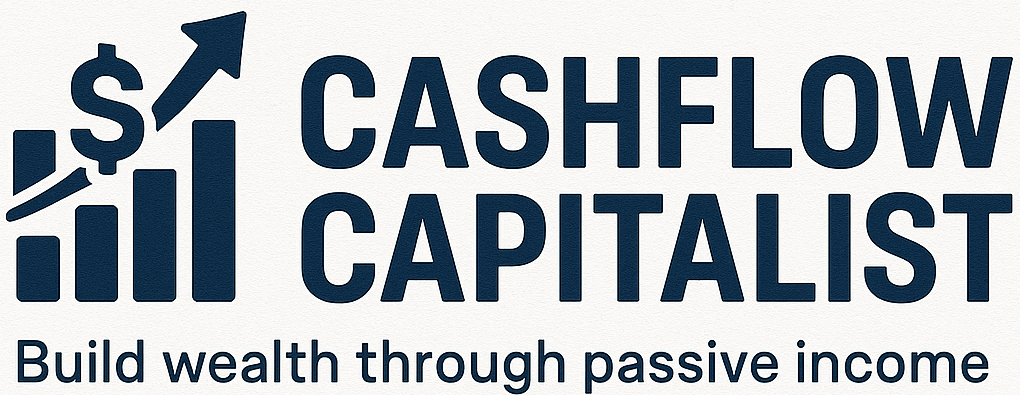The Psychology of Wealth: How Thinking Like an Investor Changes Everything
What sets the wealthy apart isn’t just luck or how much they earn—it’s their mindset. The way you think about money and investing can change your financial path. By thinking like an investor, you focus on long-term gains, not quick profits. This approach is key for building wealth, as seen in self-made millionaires and successful entrepreneurs.

In “The Psychology of Money” by Morgan Housel, he highlights the importance of understanding money’s psychological side. Changing your mindset can unlock your financial future. Start by learning from successful investors and applying their strategies to your plans. For more insights, check out books that have changed how people think about.
Key Takeaways
- Understanding the psychology of wealth is key to financial success.
- Adopting a long-term view can lead to more stable investments.
- Knowing your biases can help you make smarter investment choices.
- Wealthy people often value being frugal and smart with their investments.
- Building wealth means understanding the difference between assets and liabilities.
The Wealth Gap: Mindset, Not Just Income
To understand the wealth gap, we must look beyond just money. It’s not just about how much people earn. It’s also about their financial mindset.
Why Most People Stay Financially Stuck
Many people stay in a financial rut. They lack financial knowledge and have a spending-first mindset. This leads to a cycle of living paycheck to paycheck.

The Fundamental Difference in How the Wealthy Think
The wealthy think differently. They focus on growing their wealth through smart investments. They understand financial markets and are ready to take risks, as explained in how to think like a millionaire.
Canadian Wealth Statistics: Beyond the Numbers
Canadian wealth stats show a big problem: wealth inequality. The top 20% have most of the wealth, while the bottom 40% have very little. Knowing these numbers is key to fixing the wealth gap and improving financial literacy.
The Investor Mindset: Core Principles That Drive Wealth
Creating wealth starts with a mindset change, from spending to investing. It’s not just about managing money better. It’s about thinking differently about wealth and making smart financial choices.
What Separates Investors from Consumers
Investors and consumers view money differently. Investors buy assets that earn money, unlike consumers who spend on things that cost more than they’re worth. Successful investors know the difference between assets and liabilities and act on it.

The Long-Term Perspective
Investors focus on the long game, not just short-term gains. They ignore market ups and downs to aim for long-term growth. For instance, investing in the stock market for the long has worked well for many in Canada.
How Successful Canadian Investors Approach Money Decisions
Successful Canadian investors are disciplined and keep learning. They also spread their investments to manage risks. This approach helps them make better choices and grow their wealth over time.
| Investor Trait | Description | Benefit |
|---|---|---|
| Disciplined Approach | Sticking to a well-thought-out investment strategy | Reduced risk, increased chance for long-term gains |
| Continuous Education | Keeping up with market trends and new investment chances | Improves decision-making, helps adapt to market shifts |
| Diversification | Investing in various asset types | Manages risk, aims for more stable returns |
Delayed Gratification: The Foundation of Wealth Building
Learning to delay gratification is key to financial success and wealth. It shows that making sacrifices now can bring big benefits later.

The Marshmallow Test and Financial Success
The marshmallow test by Walter Mischel in the 1960s showed how waiting for rewards is important. Kids who waited longer for treats did better in life, including financially. This idea helps adults too, showing that patience can lead to bigger rewards.
Trading Today’s Pleasures for Tomorrow’s Freedom
Choosing to wait for financial freedom means changing how you think. It’s about seeing the cost of instant pleasure versus waiting. Saving money instead of spending on luxuries can bring financial freedom. As the article on the truth about FIRE points out, financial freedom is more important than early retirement.
Practical Exercises to Strengthen Your Delayed Gratification Muscle
- Practice the 30-day rule: Wait 30 days before buying something non-essential to assess if it’s truly necessary.
- Set clear financial goals and remind yourself of them regularly to stay motivated.
- Automate your savings by setting up automatic transfers to your savings or investment accounts.
By doing these exercises every day, you can get better at delaying gratification. This helps you reach your financial goals.
Risk Intelligence: How Investors Calculate Opportunity
Investors don’t shy away from risk; they smartly figure it out to grab chances. It’s key to develop risk intelligence for wise investment choices that lead to wealth.
Understanding Good Risk vs. Bad Risk
Not all risks are the same. Good risk comes from smart choices that could bring big rewards. On the other hand, bad risk is about taking big risks without a good chance of winning. It’s important for investors to tell the difference.
The Mathematics of Calculated Risk-Taking
Smart investors use math to measure risk. They look at chances, possible results, and make choices based on facts. Calculated risk-taking aims to get the most gain while keeping losses low.
Building Your Risk Tolerance Gradually
Risk tolerance grows over time. Start with small risks and slowly take on more as you get bolder. This builds confidence and readiness for bigger investments.
Canadian Investment Risk Considerations
Canadian investors face special risks like price changes in commodities and rule changes. Knowing these risks helps make better choices.
Opportunity Cost Thinking: The Hidden Variable in Every Decision
Every financial choice you make has a hidden factor: opportunity cost. Knowing this is key to making smart decisions that meet your financial goals.
Why Every Dollar Has a Job
When you spend money, you’re picking one thing over another. This is where opportunity cost comes in. Every dollar should help you reach your financial goals, whether it’s saving, investing, or spending.
Evaluating the True Cost of Purchases
To make wise financial choices, you must look at the real cost of what you buy. This means thinking about the money cost and the opportunity cost. For example, buying a $100 luxury item means missing out on other investment opportunities.
The Millionaire’s Decision-Making Framework
Millionaires make choices by thinking about the opportunity costs. They ask themselves: “What else could I do with this money?” or “Will this investment give me a better return than others?”
| Decision | Opportunity Cost | Potential Return |
|---|---|---|
| Investing in Stocks | Giving up immediate consumption | Potential long-term gains |
| Spending on Luxury | Forgoing other investments | Immediate pleasure |
Mental Models from Behavioral Finance
Investing is as much about psychology as it is about numbers. Knowing this can change the game. Behavioral finance sheds light on the psychological factors that shape investment choices. It helps investors grasp the markets better.
Compound Interest: The Eighth Wonder of the World
Compound interest is called the eighth wonder of the world for a reason. It’s a powerful tool that can grow your investments over time. As successful investors say, grasping compound interest is key to long-term wealth.
Loss Aversion and How to Overcome It
Loss aversion is a bias that can lead to bad investment choices. It’s the fear of losing money more than the joy of gaining it. To beat loss aversion, focus on your long-term goals, not short-term market ups and downs.
Anchoring Bias and Price Perception
Anchoring bias happens when you rely too much on the first piece of information. This can skew your view of prices and lead to poor choices. Knowing about this bias can help you make better decisions.
Practical Techniques to Overcome Cognitive Biases
To fight cognitive biases, try these practical tips:
- Take a long-term view to reduce the impact of short-term market volatility.
- Diversify your portfolio to minimize risk.
- Regularly review and adjust your investment strategy to ensure it remains aligned with your financial goals.
By using mental models from behavioral finance, you can make better investment choices. This can lead to greater financial success.
Assets vs. Liabilities: Redefining What You Own
Knowing the difference between assets and liabilities is key. It helps you make smart money choices. This knowledge can lead you to financial freedom.
The Rich Buy Assets, the Poor Buy Liabilities
The wealthy buy things that make money, like real estate or stocks. The poor spend on things that cost a lot but lose value, like fancy cars. By focusing on assets, you can start building wealth.
Assets: Properties, investments, businesses that make money.
Liabilities: Things that cost you money, like fancy items or things that lose value.
Transforming Expenses into Investments
Turning your spending into investments is a smart move. Instead of buying a car, think about getting a rental property. This change can greatly improve your finances.
- Look at your spending to find investment opportunities.
- Think about the long-term effects of your money choices.
- Choose to spend on things that grow in value or make money.
Building Your First Asset Portfolio
You can start building an asset portfolio, no matter your income. First, check your finances, set goals, and find assets that fit your risk level.
| Asset Type | Risk Level | Potential Return |
|---|---|---|
| Stocks | High | High |
| Bonds | Low | Low-Moderate |
| Real Estate | Moderate-High | Moderate-High |
Tax-Efficient Asset Building for Canadians
For Canadians, making your investments tax-efficient is important. Use tax-advantaged accounts like TFSAs and RRSPs to save on taxes.
Understanding assets and liabilities and using tax-smart strategies can boost your finances. Start by changing how you view your possessions and make choices that help you reach your financial goals.
The Abundance Mindset: Seeing Opportunity Where Others See Scarcity
Switching from scarcity to abundance thinking changes the game for investors. With an abundance mindset, you spot chances others overlook. You turn challenges into chances for financial growth.
Breaking Free from Financial Scarcity Thinking
Scarcity thinking holds you back by focusing on what’s missing. To break free, first, acknowledge the scarcity mindset. Then, shift your thoughts to abundance. Believe in your wealth-creating power and see market chances.
Creating Value vs. Extracting Value
Wealth creators aim to add value, not just take it. They offer goods or services that help others, making wealth. Extracting value, on the other hand, takes without giving back, leading to a zero-sum game. Focus on adding value for long-term success.
How Wealth Creators View Market Downturns
Market downturns are seen as chances by those with an abundance mindset. They buy assets at lower prices, aiming to grow their wealth over time.
Canadian Success Stories: From Scarcity to Abundance
Canadian entrepreneurs and investors have moved from scarcity to abundance, achieving great success. Companies that innovated and expanded during tough times have thrived. This shows the abundance mindset’s power.
Embracing the abundance mindset opens new doors to financial freedom. It’s about seeing the good in every situation and taking smart risks to build wealth.
Practical Strategies to Implement the Investor Mindset Today
Getting to financial freedom is not just about knowing stuff. It’s about taking action. To think like an investor, you need to use strategies that fit into your daily life.
The 24-Hour Purchase Rule
Try the 24-hour purchase rule. If you want to buy something, wait 24 hours first. This rule can stop you from buying on impulse and help you make better financial choices.
Setting Up Your Financial Infrastructure
Building a strong financial base is key. This means making a budget, saving for emergencies, and using a high-yield savings account. Getting advice from a financial advisor can also be very helpful.
Building Your Financial Education System
Learning never stops if you want to keep thinking like an investor. Here are some ways to keep learning:
- Read books on investing and personal finance
- Subscribe to financial news and podcasts
- Attend seminars and webinars
Resources for Canadian Investors
Canadian investors have many resources to use. You can find detailed financial plans made just for the Canadian market.
Daily Habits That Reinforce Investor Thinking
Creating daily habits can help you stay focused on investing. Good habits include:
- Reviewing your financial goals every day
- Tracking your spending
- Keeping up with market news
By using these strategies, you can develop an investor mindset. This will help you get closer to financial freedom.
Conclusion: Your Wealth Journey Begins in Your Mind
Your journey to financial success starts with a change in mindset. By adopting an investor mindset, you can move beyond living paycheck to paycheck. This shift allows you to start building wealth.
The key principles of successful investing are important. These include delayed gratification, risk intelligence, and understanding opportunity costs. These are the building blocks of wealth for investors.
Remember, your wealth journey is about more than just money. It’s about gaining freedom and security. By using the strategies and mental models discussed, you can make progress toward your financial goals.
You have the power to change how you view money. This can lead to a more prosperous future. Start making a mindset shift today to take control of your financial future.
FAQ
What is the investor mindset, and why is it important for financial success?
The investor mindset is about growing your money over time. It involves managing risks and making smart choices. It’s key to success because it helps you make better investment decisions and avoid financial mistakes.
How do the wealthy think differently about money?
The wealthy focus on growing their wealth and think long-term. They make careful financial choices. They prioritize building assets and smart investing over quick spending.
What is delayed gratification, and how does it impact financial success?
Delayed gratification means waiting for long-term benefits instead of quick rewards. It’s vital for success because it helps you save, invest, and make smart choices. These choices may not pay off right away but lead to big gains later.
How do investors calculate risk and opportunity?
Investors weigh the risks and rewards of investments. They consider their goals and risk tolerance. This helps them make informed decisions.
What is opportunity cost, and why is it important in financial decision-making?
Opportunity cost is the value of the next best option you give up. It’s key because it helps you understand the true cost of your choices. This leads to better decision-making.
How can I develop an abundance mindset and identify new opportunities?
To develop an abundance mindset, focus on abundance, not scarcity. Be open to new chances and grow. Be proactive, take smart risks, and always be ready to learn.
What are some practical strategies for implementing the investor mindset?
To adopt the investor mindset, use the 24-hour rule, build a strong financial base, and learn about finance. Also, create daily habits that support investor thinking.
How can I overcome cognitive biases that affect my financial decisions?
Overcome biases by knowing them, taking time to think, and using finance models. Understand the power of compound interest, loss aversion, and anchoring bias.
What is the difference between assets and liabilities, and how can I focus on acquiring assets?
Assets grow your wealth, while liabilities cost you money. Focus on investments that help you reach your goals. Turn expenses into investments to grow your wealth.
How can I start building my wealth journey with a newfound understanding of the investor mindset?
Start by applying the investor mindset principles like delayed gratification and risk awareness. Set clear goals, learn about investing, and take small steps towards your dreams.




